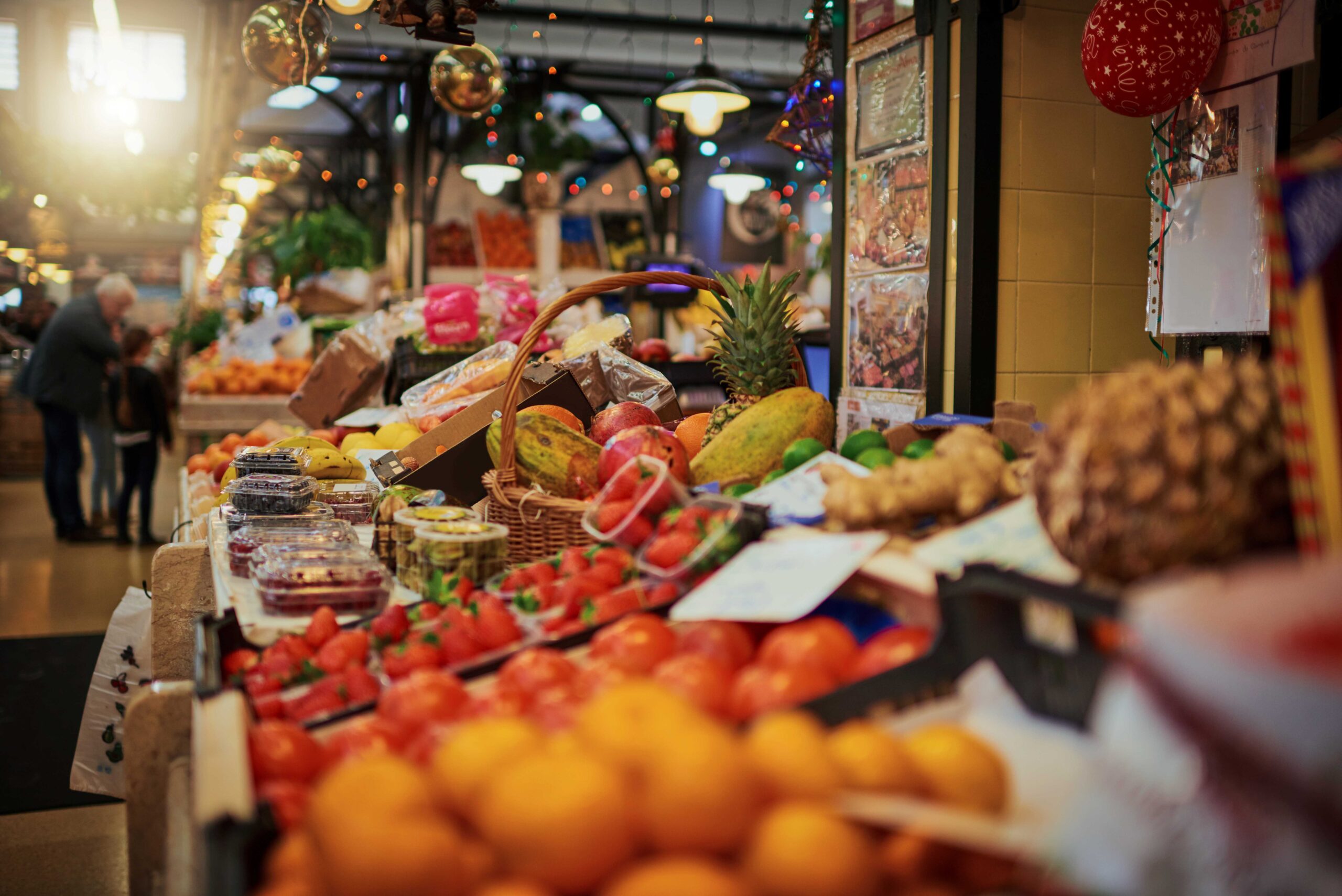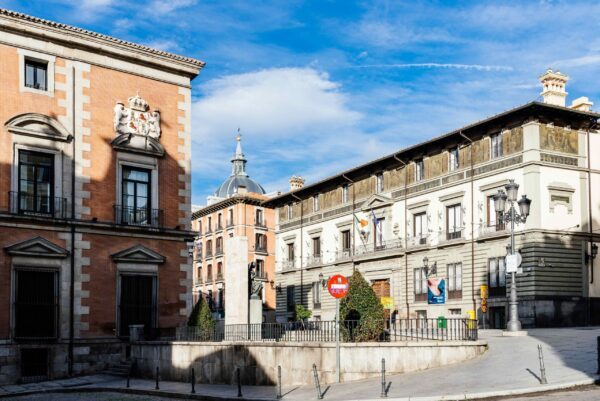Hay rincones de Madrid que las guías turísticas no destacan, pero a los que vuelves una y otra vez. La Plaza de la Paja es uno de ellos. Situada en el barrio de La Latina, parece haberse escapado del tiempo. Aquí se puede encontrar de todo: el pasado morisco, ecos de oraciones reales, mercados olvidados, escaleras antiguas y, lo que es especialmente agradable, un acogedor jardín escondido a la vista.
¿Te gustaría estar en Madrid un momento antes de la era de la rápida urbanización? Entonces vale la pena quedarse en esta plaza un poco más de lo que requiere una foto para contar sus historias.
Un lugar donde la historia vive bajo tus pies
La Plaza de la Paja no es solo un punto geográfico, sino el corazón del antiguo barrio morisco. En sus alrededores hay calles estrechas con pendientes pronunciados, como sacadas de los grabados de los mapas antiguos. Todo ello es consecuencia del barranco por el que discurría el arroyo de San Pedro. Ahora, su cauce está ocupado por la calle Segovia, pero la pendiente se mantiene.
Las propias paredes que rodean la plaza hablan de una época en la que la comunidad musulmana aún conservaba sus tradiciones más allá de las fronteras de la ciudad cristiana.
La plaza de la Paja fue en su día un lugar lleno de vida: en los siglos XIII y XIV era el principal mercado de la ciudad. Era la plaza más espaciosa de Madrid, un centro de comercio y vida social.
Pero los tiempos cambian. El rey Juan II trasladó la actividad mercantil a la nueva plaza del Arrabal (hoy plaza Mayor) y la plaza de la Paja comenzó a perder su importancia. El declive ya era evidente en el siglo XVI: los tribunales se trasladaron a los nuevos barrios y las calles occidentales, con sus pendientes y curvas, empezaron a parecer incómodas.
Sin embargo, a pesar del cambio de época, la plaza ha seguido viva y con múltiples facetas.
¿Y por qué «Paja»?
El nombre de la plaza despierta curiosidad. Resulta que está relacionado con la paja que se vendía aquí. Esta paja se utilizaba para alimentar a las mulas que utilizaban los sacerdotes que prestaban servicio en la Capilla del Obispo. Sí, era precisamente ese impuesto eclesiástico, solo que en forma de heno.
Por cierto, la plaza tuvo otros nombres: Plaza de las Tabernillas en el siglo XVIII e incluso Plaza del Marqués de Comillas en el siglo XX. Pero el apodo popular, como suele ocurrir, se impuso a las versiones oficiales.
Después de que la plaza dejara de ser un mercado, se convirtió en un barrio residencial para familias nobles. Alberga palacios que fueron residencia de monarcas católicos.
Especialmente interesante es el palacio de la familia Lasso de Castilla. En el siglo XVI, su galería estaba conectada con la iglesia de San Andrés para que los monarcas pudieran ir a misa sin salir al exterior.
Los nombres de los huéspedes inspiran respeto: Juana la Loca, su marido Felipe el Justo e incluso el futuro papa Adriano VI.
Algunos de los edificios han caído en desuso con el paso del tiempo, pero se conservan dos elementos clave: la capilla del obispo y el antiguo Palacio de Vargas, que ahora alberga la escuela. Estos edificios son como anclas del tiempo en el centro de la ciudad.
Un oasis verde
De repente, detrás de un muro, justo al lado de la plaza, se esconde un pequeño jardín verde, casi secreto. El jardín del Príncipe de Anglesey formaba parte del palacio del mismo nombre. Ahora es un lugar para quienes buscan paz.
Es un raro ejemplo de jardín clásico madrileño del siglo XVIII. Cuenta con 800 metros cuadrados de vegetación, setos de boj, senderos cuidados y un silencio que no perturba ni un solo coche.
Este jardín es como una invitación a detenerse, sentarse en un banco y exhalar.
¿Qué hacer aquí hoy?
La Plaza de la Paja no es un museo al aire libre, sino un lugar donde relajarse de verdad. Aquí tienes algunas ideas de lo que vale la pena hacer aquí:
- Ver la capilla que sobrevivió a terremotos y guerras.
- Encontrar los restos de una antigua acera.
- Echa un vistazo al jardín y quédate un rato.
- Siéntate en una de las terrazas y pide un vermú.
- Lee un libro a la sombra de un árbol centenario.
- Escucha a los músicos callejeros durante la temporada de festivales.
Cada una de estas actividades es una forma de sintonizar con el ritmo del Madrid antiguo, pausado, respetuoso con los detalles y cargado de historia.
Plaza de la Paja
En una ciudad llena de museos, catedrales y bulliciosas avenidas, lugares como la Plaza de la Paja nos recuerdan que la verdadera magia vive en las sombras, no donde están las multitudes, sino donde un paso casual se convierte en un viaje en el tiempo.
Y la próxima vez que estés en La Latina, desvíate del camino. Donde los adoquines crujen bajo tus pies y huele a jazmín, el Madrid de siempre te está esperando.

